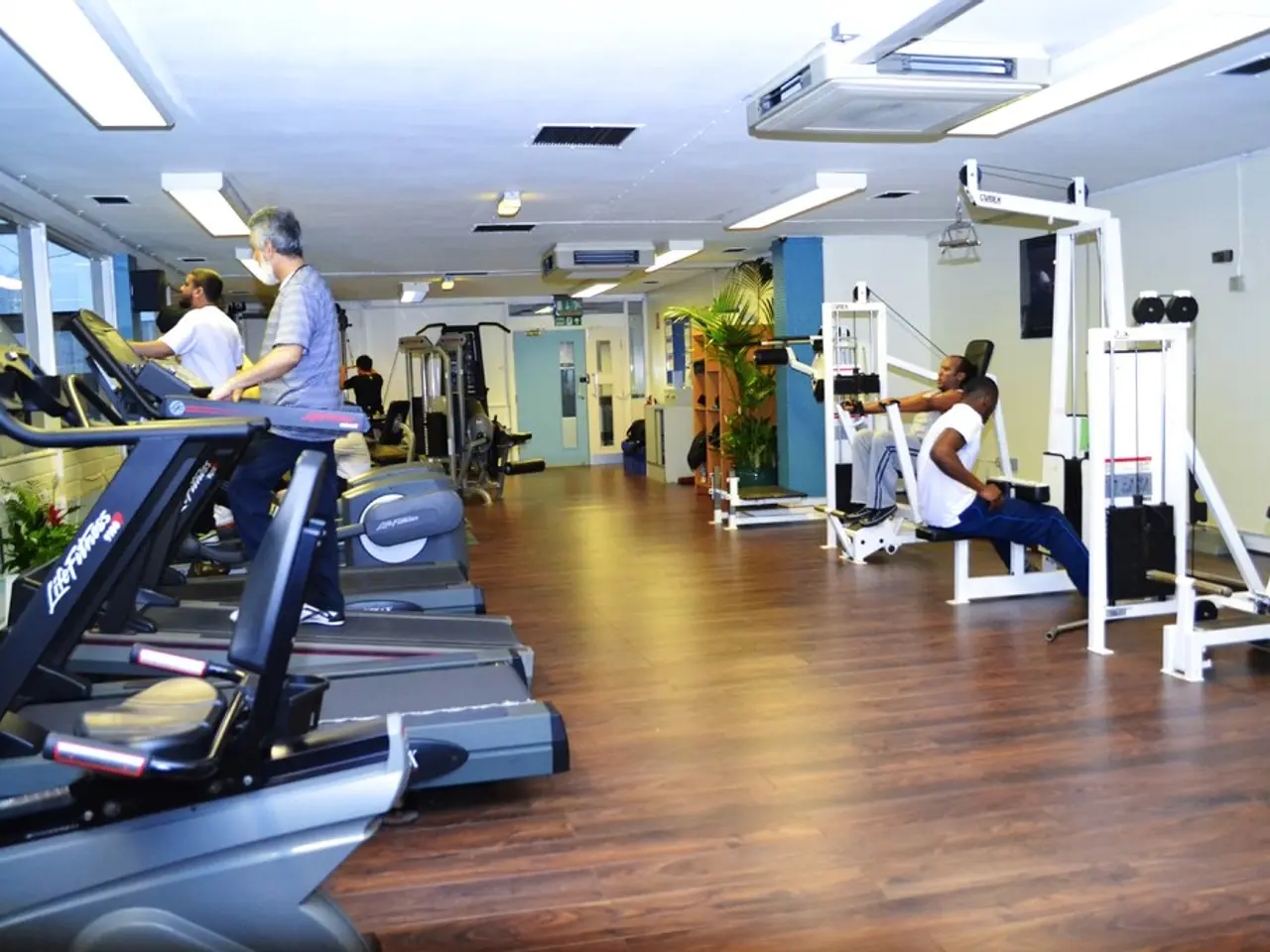Securing suitable workout options for individuals with heart valve leak issues: recommendations included
For individuals with a leaky heart valve, also known as valve regurgitation, exercise is generally safe and highly recommended as part of managing the condition. Here's a guide to help you navigate safe exercises and precautions.
Recommended Activities
Moderate-intensity aerobic exercise such as walking, swimming, and cycling is encouraged for most people with mild to moderate valve leakage. Walking, a low-impact exercise, is especially beneficial, improving cardiovascular health, reducing blood pressure, aiding weight management, and reducing stress—all beneficial for heart valve conditions. Resistance or weight training can be included along with aerobic exercise as tolerated, to maintain muscle strength and overall fitness.
Precautions
Always consult a primary care provider or cardiologist before beginning or changing an exercise program, especially if you have significant valve issues or symptoms. People with severe valve leakage or symptoms such as palpitations, chest pain, or heart failure signs should undergo regular monitoring and possibly avoid heavy or competitive sports unless cleared by a doctor.
Managing other risk factors—such as maintaining a healthy body weight, eating a heart-healthy diet low in salt and saturated fats, and avoiding stimulants like caffeine, alcohol, and cigarettes—supports exercise benefits and heart health. Stress management techniques (yoga, meditation) may also complement physical activity by reducing symptom triggers like palpitations.
Regular follow-up with echocardiography is important to track valve function and heart health, adjusting exercise recommendations as needed. If symptoms worsen or heart function declines despite exercise and medical management, a cardiologist may recommend surgical or minimally invasive procedures to repair or replace the valve.
Starting Cycling or Strength Training
When starting cycling or strength training exercises, it's important to start easy and work your way up to avoid sudden increases in heart rate. Stretching is often advisable before engaging in other activities, making it an easy option to incorporate into daily activities.
Swimming
Swimming, a no-impact exercise, is generally considered safe for people with a leaky heart valve. However, it's advisable to discuss swimming with a doctor before starting. Local gyms, health spas, and physical therapy facilities may have pools for members to use.
Yoga
Yoga, with controlled movements and stretches, can be mentally and physically beneficial and is suitable for beginners with modifications available. Yoga can provide benefits such as flexing and stretching muscles, injury protection, improved energy, increased muscle tone, stress reduction, and improved balance.
In summary, safe exercises for most individuals with a leaky heart valve include low to moderate-intensity aerobic activities and resistance training, with walking being especially beneficial. Exercising under medical guidance and monitoring symptom changes are essential precautions to ensure safety and effectiveness. Always consult a doctor before starting any new exercise program.
Maintaining a healthy body weight through diet and exercise is crucial for individuals with a leaky heart valve. This can be facilitated through various forms of fitness-and-exercise like moderate-intensity aerobic exercise such as walking and cycling, and strength training. However, mental-health practices like yoga, with controlled movements and stretches, can also provide stress reduction and improved balance—both beneficial for heart valve conditions and overall health-and-wellness.




